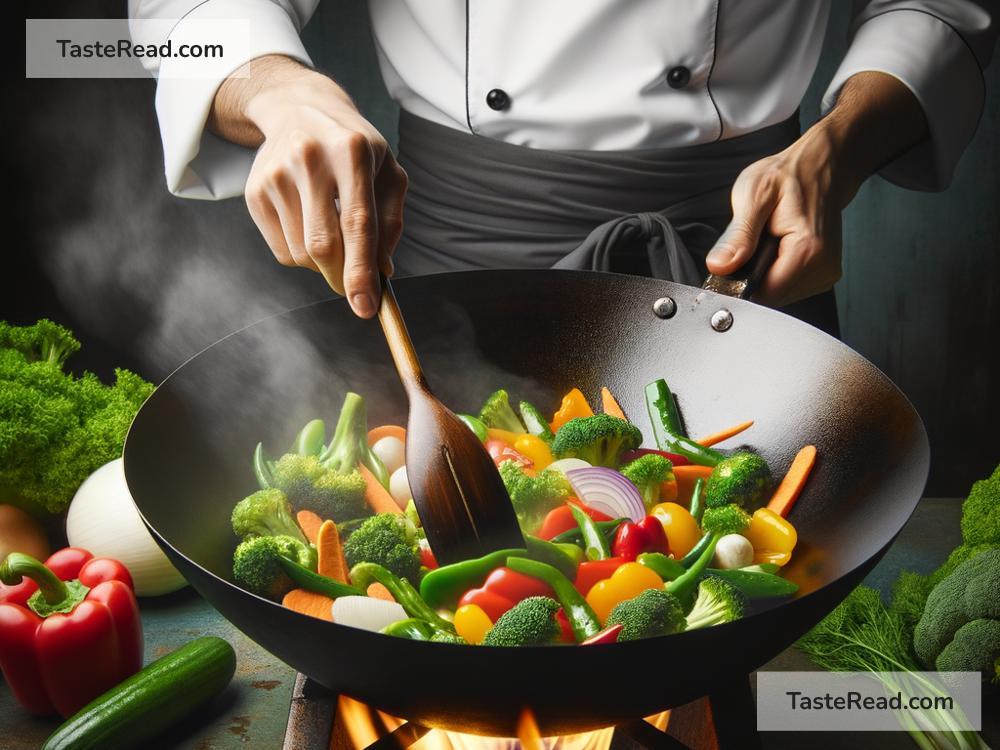Unveiling the Techniques of Wok Cooking in Chinese Cuisine
The wok, a versatile and deeply beloved kitchen tool in Chinese cuisine, isn’t just a cooking vessel but a symbol of cultural richness and culinary tradition. This simple, rounded, metal pot has been the cornerstone of Chinese cooking for centuries, transforming basic ingredients into mouth-watering dishes. But what is it about wok cooking that makes it so special? Let’s dive into the art and techniques of wok cooking and discover what sets it apart in the world of gastronomy.
The Magic Begins with the Wok’s Shape
The traditional wok boasts a distinctive round bottom and steep sides, designed for a purpose beyond just aesthetics. This unique shape allows for quick and even heating, essential for the high-heat cooking methods typical in Chinese cuisine. It’s a master of versatility, enabling chefs to boil, steam, deep-fry, stir-fry, and even smoke, all with one humble pot. Such flexibility is rare in kitchen tools, underscoring the wok’s indispensable role in Chinese cooking.
The Famed Stir-Frying Technique
Stir-frying is perhaps the most recognized technique associated with wok cooking. It’s a swift dance of ingredients tossed and turned over high heat, rapidly cooking meats and vegetables while retaining their crispness and nutritional value. The secret lies in the wok hei, or “breath of wok,” a term describing the unique, smoky flavor imparted to the food by a well-heated wok. Achieving wok hei requires skill and a seasoned wok, making it a coveted aspect of Chinese culinary art.
The Mastery of Heat Control
Another crucial aspect of wok cooking is mastering heat control. The thin metal of the wok heats up and cools down quickly, offering chefs unparalleled command over the cooking temperature. This swift control ensures that meats stay tender, vegetables keep their crunch, and sauces perfectly emulsify without burning or sticking. It’s about knowing when to blast the heat for quick cooking or reduce it to simmer and blend flavors gently.
The Diversity of Cooking Methods
Beyond stir-frying, the wok supports a myriad of cooking techniques, emphasizing its agility. Deep-frying, for example, benefits from the wok’s wide opening and deep center, minimizing oil usage while ensuring even cooking. Steaming, another popular method, is efficiently done in a wok with the aid of bamboo steamers stacked on top of each other, allowing for multiple dishes to be cooked simultaneously with the steam circulating freely.
The Art of Seasoning the Wok
Seasoning, or properly preparing a new wok for cooking, is an essential rite of passage in Chinese kitchens. This process involves coating the wok in oil and heating it until it forms a natural, non-stick patina. Over time, a well-seasoned wok develops layers of flavor that contribute to the depth of each dish cooked in it. It’s a personal journey, with each wok bearing the unique culinary history of its owner.
Learning the Techniques: A Journey for Every Cook
Embracing wok cooking is embracing a commitment to learning and growth. While the basics can be mastered with practice, achieving the subtlety and depth of authentic Chinese cuisine requires patience and experience. Here are some tips for beginners:
- Start Simple: Begin with basic stir-fries to get a feel for heat control and the swift movement required.
- Understand Your Wok: Whether you’re using a traditional round-bottomed wok or a modern flat-bottomed variant suited for Western stoves, learn how it behaves on your heat source.
- Preparation is Key: Chinese cooking emphasizes mise en place, or having all ingredients prepared and ready to go. This is crucial due to the quick cooking times.
- Season Your Wok: A well-seasoned wok is non-stick and flavorsome. It’s a step you shouldn’t skip.
- Practice: Like any other skill, mastering the wok comes down to practice. Each attempt brings you closer to the coveted wok hei.
Conclusion
The techniques of wok cooking in Chinese cuisine unveil a world where culinary tradition meets artistry. From the swift flicks of stir-frying to the meticulous heat control, each element of wok cooking is a testament to the depth and complexity of Chinese gastronomy. Whether you’re an aspiring chef or a home cook looking to expand your culinary repertoire, the journey into wok cooking is one of endless discovery and delight. So, grab your wok and let the adventure begin!


